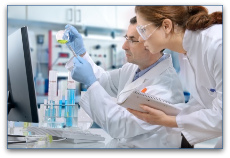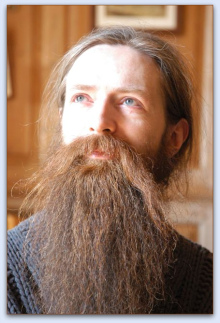
A world without aging might resemble the plot to a science fiction movie rather than real life, but scientists dedicated to understanding the aging process are working to make it a reality.
Biogerontologists are researchers, scholars, and scientists who study the illnesses, diseases, and reasons behind why we age. Some biogerontologists hope by understanding the aging process, we can extend the longevity and quality of life.
Biogerontology is a relatively new field that was born from the question: “Why do we age?” Many theories and ideas have emerged about the aging process. Scientists working in the field today attribute some of the reasons to damage built up over time from disease and illness. Other scientists believe aging is directly influenced by genetics, and point to the lack of variation in lifespan for the human species.
But research into the reasons why we age is still in the early stages, and more biogerontologists are needed to research aging and the obstacles to living longer. For example, some biogerontologists work to understand how diseases like cancer, Alzheimer’s, Parkinson’s, and other disorders affect the mind and body, reducing longevity of life. It is hoped that finding cures and treatments to these diseases will increase the lifespans of humans.
Biogerontologists Work Profile?
Because biogerontology focuses on understanding the aging process and finding new ways to treat age-related diseases, biogerontologists spend much of their time on research and education.
Biogerontologists work in research laboratories, comparing the aging process of animals and humans to gain a better understanding of aging factors. Researching the ways other species age provides profound insights into how to reduce age-related diseases and prolong life through experimental practices. For example, biogerontologists have already increased the lifespan of rats and mice by reducing caloric intake. Calorie Reduction (CR) works by diminishing caloric intake while maintaining vitamin and nutrient consumption. So far, it is the only method known that could potentially extend the lifespan of humans, though for ethical reasons, studies on humans have yet to be conducted.
One of the most puzzling aspects of aging is how some animals appear to age, while others don’t. For example, Galapagos turtles have been known to live up to 177 years, yet show no signs of aging. Reptiles are known to age slower than mammals, and scientists are working to figure out why. It has been theorized that mammals may lack a certain anti-aging mechanism that reptiles possess, and these could be useful to humans, according to senesence.info.
Biogerontologists also look at the ways environmental factors affect the human lifespan. For example, scientists examine how smoking, obesity, mental health issues, and substance abuse impact longevity of life. They have found a strong correlation between mental disorders and heart disease, and smoking has long been documented to reduce lifespan and lead to cancer.
Biogerontologists are also committed to curing age-related diseases, such as Alzheimer’s disease. For example, scientists now know that a protein called beta amyloid creates plaques that attack and kill brain cells. Studying how this protein contributes to the disease, plus investigating possible early interventions when plaque begins its attack is one area where the work of biogerontologists will contribute to the future of eradicating this disease.
Biogerontologists use observational skills to determine what constitutes “normal” aging and when aging may be influenced by disease or illness. Someone with a neurological disorder may display normal memory loss associated with aging before the disease becomes more severe. Years ago, what was thought of as normal aging is now known to be directly correlated with disease, like severe memory loss associated with Alzheimer’s.
Scientists now believe normal aging is a series of biological processes, and that sets it apart from reduced longevity of life related to outside factors like smoking, substance abuse, and dementia, such as Alzheimer’s.
How Do I Become a Biogerontologist?
Biogerontology is a profession based mostly in laboratories and research centers, so a strong background in research analysis is recommended. As a biogerontologist, you will have the opportunity to discover groundbreaking new treatments for age-related diseases, as well as find reasons behind the aging process.
Training for a career in biogerontology begins in high school. Strong grades in biology, chemistry, and other science courses will help to prepare you for secondary education. Gaining research experience through internships in college is critical for your future career in biogerontology. Most biogerontologists obtain their PhDs before finding work as researchers.
Biogerontology is a relatively new field, and much of biogerontology is waiting to happen. As greater technologies and methods of research allow us more insight into the aging process, biogerontologists will lead the battle against the negative effects of aging.
If you’re interested in extending the quality of life as we age, researching the effects of aging in a wide variety of species, and finding new cures and treatments for age-related diseases, contact schools offering degrees in biogerontology.
Biogerontologists in Focus: Aubrey de Grey

Perhaps one of the most controversial figures in biogerontology, Aubrey de Grey believes it is possible to reverse the aging process and extend life indefinitely.
De Grey believes in a goal-oriented approach to biogerontology, rather than a curiosity-driven one, and seeks to repair all age-related damage in the human body. By stopping degeneration that accompanies disease, de Grey reasons humans could live to be 1,000 years old. To focus research into areas deemed necessary for extending life, de Grey cofounded the SENS Foundation in 2009.
SENS stands for Strategies for Engineered Negligible Senescence. According to sens.org, SENS is “an integrated set of medical techniques designed to restore youthful molecular and cellular structure to aged tissues and organs.” The SENS Foundation examines “aging damage,” or damage the body accumulates through side effects from metabolism. De Grey has identified seven major areas of cellular and molecular damage that lead to aging.
Cancer-causing mutations
Sense.org indicates that one of the most important ways to defeat aging would be to “develop a really, really good cure for cancer.” While easier said than done, the SENS Foundation is focusing on finding ways to replenish telomeres. Telomeres are found at the ends of DNA strands, and are described as filling a role similar to the plastic on the tips of shoelaces, tips that prevent shoelaces from unraveling. When cells reproduce, telomeres slowly get worn down, causing trouble for those with cancer because the disease causes cells to reproduce very quickly.
Mitochondrial mutations
Mitochondria are energy-producing centers in our cells that have their own DNA separate from the nucleus. Because of this, they are subject to mutation that can accelerate the aging process. Further studies into mitochondria have shown that the majority of their genetic material is contained in the nucleus of the cell, with the exception of 13 proteins. By moving these proteins to the nucleus and creating back ups, SENS scientists believe they would make mitochondrial mutations harmless, attributed to the cell being able to replace mutated proteins through the nucleus.
Extracellular junk
Aging bodies build up “junk,” or sticky proteins that hinder the ability for cells and tissue to function. This junk builds up outside of our cells, and the sticky proteins have been found to lead to age-related disease like Alzheimer’s. Through vaccinations that aim to stimulate the immune system to remove the proteins, it is hoped to prevent the degradation of cells.
Intracellular junk
Intracellular junk is similar to extracellular junk, except that build up of junk occurs inside of the cell. Because the cell is unable to digest this harmful waste, it builds up over time and leads to the development of “plaques,” which can result in Alzheimer’s or Parkinson’s. The SENS Foundation believes that by adding enzymes to the cell that break down these plaques, it could prevent harmful junk from being built up.
Cell loss and atrophy
Cell loss occurs when our cells are depleted and cannot be replaced. This can lead to troublesome heart problems, and also issues in our skeletal muscles. SENS believes this can be remedied either by stimulating cells to reproduce, or by introducing new cells to the body.
Cell senescence
Sometimes cells try to remove unhealthy excess cells, but fail. By removing the unhealthy cells ourselves, healthy cells will replace them. Unhealthy cells are a danger to other cells around them, degrading normal tissue and leading to age-related illnesses. Finding a medication that affects one specific type of unhealthy cell while ignoring healthy ones is one possible cure.
Extracellular crosslinks
Our cells are free moving and must be allowed to slide around each other. When too much protein accumulates outside of the cell, protein links form, leading to increased elasticity of the tissue and weakening skin texture. By developing enzymes that break down these protein crosslinks, scientists hope to lower blood pressure and decrease elasticity.